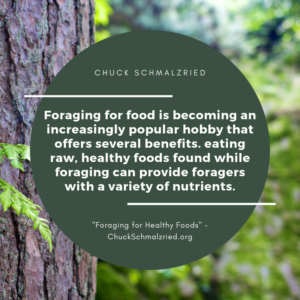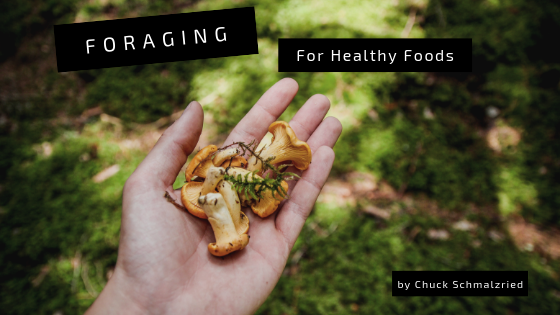Foraging for food is becoming an increasingly popular hobby that offers several benefits. Getting outdoors helps connect people with nature, and searching for food helps exercise the body. Additionally, eating raw, healthy foods found while foraging—such as berries, wild plants, fungi, and nuts—can provide foragers with a variety of nutrients. Some herbs also offer medicinal benefits. Get out into nature and forage for food using these tips.

Learn About Safe Plants
Not all natural foods are safe for consumption. It’s important to research what foods are safe in your area. Local experts and foraging groups can also provide information about wild edibles. While foraging, be respectful of nature. Stay on paths, take care not to leave trash, and don’t pick rare plants when you could give them an opportunity to reproduce.
What to Do With Wild Edibles
After finding edibles, rinse and soak the food in cool water. Many leaves of edible plants can be torn into a salad, fungi and berries can be eaten raw, and herbs can be carefully dried, crushed, and used in tea. You can also use many plants to accent or garnish meals if you are having guests for dinner.
Common Healthy Foods to Look For
Dandelion
Dandelions are a bright, yellow flower that is often used for ornamental purposes. They typically grow in large fields together as the seeds spread quickly in the wind. Both the flower and the leaves can be eaten after foraging. Dandelions are a good source of vitamin A, vitamin B6, and vitamin K. Additionally, dandelions contain a good amount of inulin and can help cleanse the liver. Dandelions are often considered a weed, but they are among the easiest and most beneficial wild plants to harvest.
Stinging Nettles
As the name implies, stinging nettles contain tiny hairs that act like needles when they come into contact with skin. Though they can’t be eaten in their raw form, they can be cooked and used in tea, ground into a spice to sprinkle on eggs, or stir-fried with other greens. Stinging nettles provide iron, can help improve testosterone levels, and contain large amounts of calcium.
Milk Thistle
Milk thistle is a prickly plant that boasts a bright purple flower with white veins. When dried and ground into an herb, milk thistle has been found to help treat liver disease, lower blood sugar levels in diabetics, and even slow age-related memory loss in seniors.
Your region may host additional wild plants that can be healthy and medicinally beneficial. Make sure you follow the above advice when foraging so that you stay safe and respectful.
